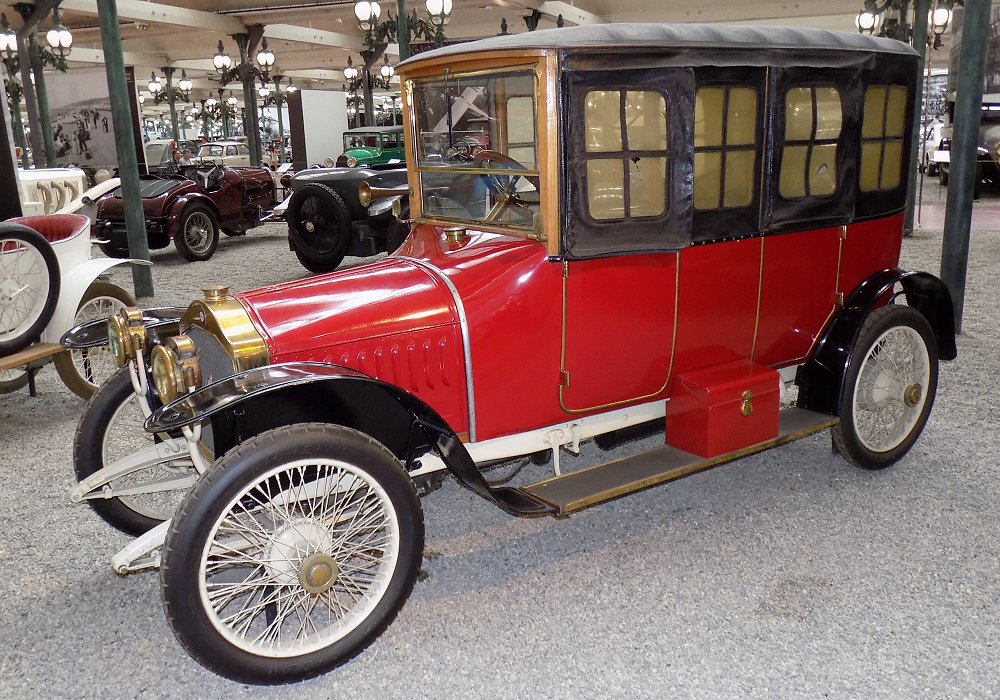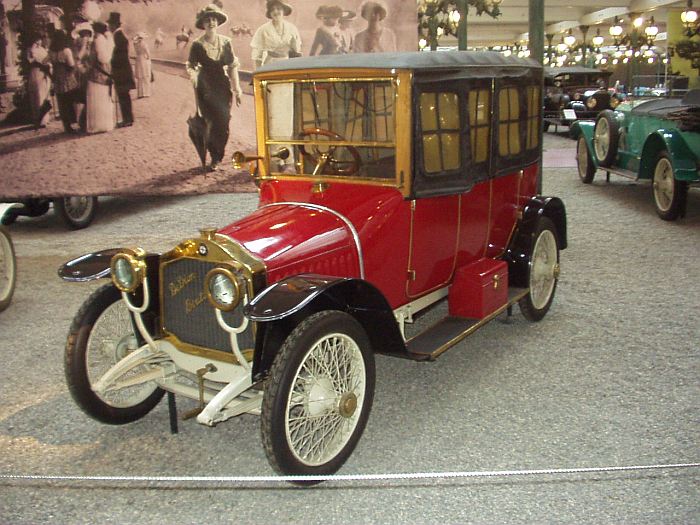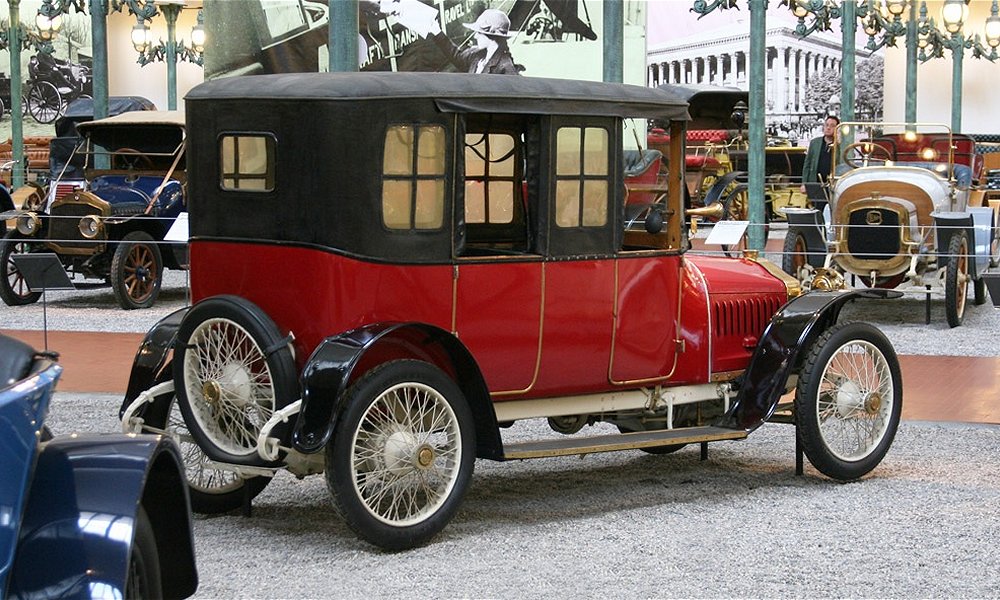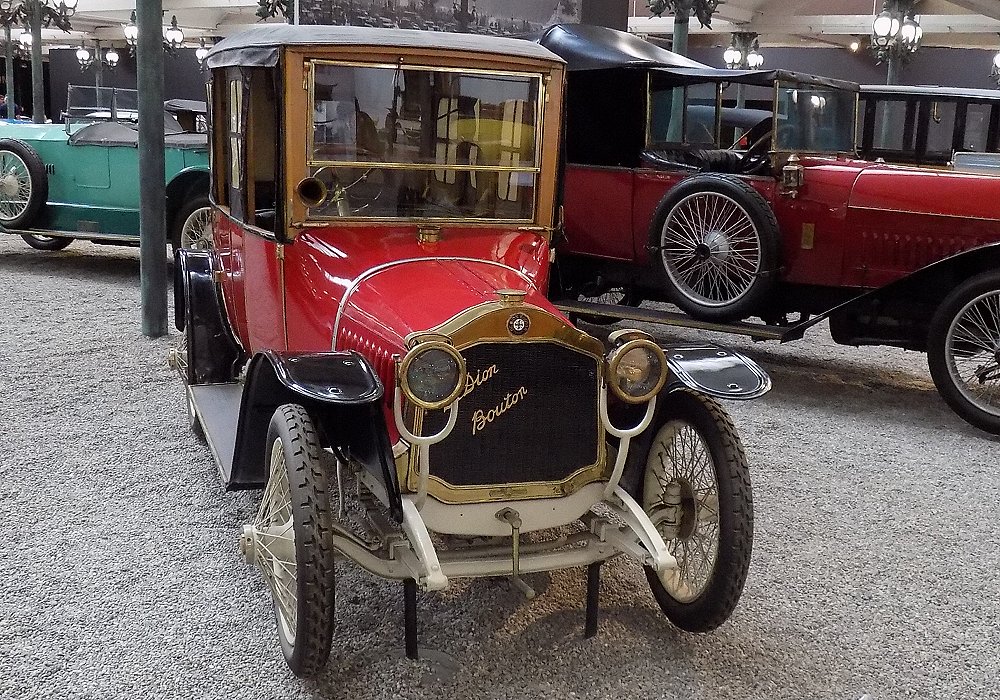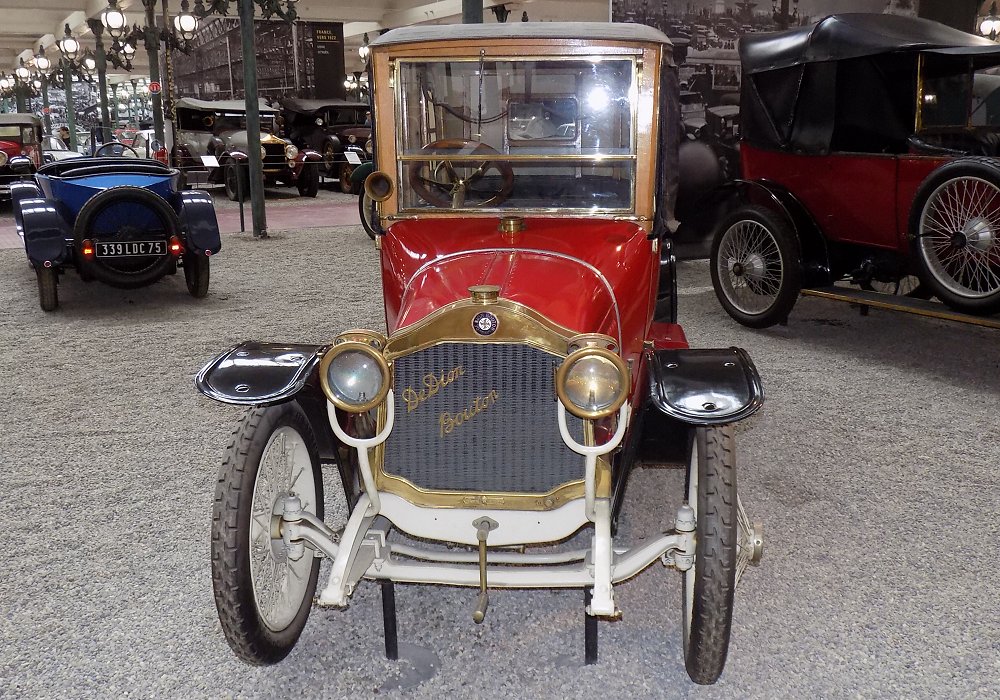Description
The De Dion-Bouton Type DH Limousine was a distinguished and luxurious model produced in the early 1910s, a time when the French manufacturer was extending its range into high-end automobiles for affluent clients. As part of the DH series, this Limousine variant reflected the company’s move towards larger, more refined vehicles that catered to private owners and professional use, including town cars, embassy transport, and livery services.
Powered by a front-mounted, four-cylinder petrol engine, the Type DH Limousine typically featured an engine displacement of around 3.0 to 3.5 litres. This engine was designed for smooth, steady operation rather than outright performance, and it produced approximately 16 to 20 horsepower. It employed a side-valve layout and magneto ignition, with water cooling and a reliable, low-maintenance configuration. The power was delivered to the rear wheels through a manual three- or four-speed gearbox and a robust shaft drive—by then a hallmark of De Dion-Bouton engineering.
The Limousine body style was fully enclosed, offering both privacy and comfort. While the chauffeur’s compartment was partially exposed or under a small canopy, the rear passenger area was completely enclosed with glass windows and often curtained for discretion. Interiors were usually finished to a high standard with plush leather or fine cloth upholstery, wood trim, and fittings such as folding footrests, interior lights, and communication tubes or speaking devices between the chauffeur and passengers.
The design of the body was stately and upright, with a strong visual presence on the road. The roofline was high enough to allow passengers to sit upright in comfort, while the side profile displayed a squared-off elegance, common to the Edwardian-era luxury saloons. The car rode on a steel ladder-frame chassis, with semi-elliptic leaf springs and mechanical brakes acting on the rear wheels, with additional braking sometimes provided via a transmission brake.
Externally, the Limousine often came finished in conservative colours—deep black, navy blue, or maroon—with polished brass or nickel fittings including the headlamps, radiator shell, door handles, and horn. The wheels were large wooden artillery-style types, shod in tall, narrow tyres suited for the unpaved roads of the era. Lighting was initially by acetylene or oil lamps, later upgraded to electric systems as the technology improved.
This vehicle was used primarily for formal travel, business appointments, and ceremonial duties, ideal for wealthy clients, dignitaries, or luxury fleet operators. It offered quiet, dignified motoring and the ability to travel in comfort over long distances, all while preserving the social norms of the time with a distinct separation between driver and passengers.
The De Dion-Bouton Type DH Limousine is today a rare survivor, cherished by collectors for its craftsmanship, engineering, and period-correct presentation. When restored or preserved in original condition, it provides a vivid window into the luxury motoring culture of pre-World War I France, representing one of the high points of De Dion-Bouton’s shift from light vehicles to grand touring and formal automobiles. Examples may be found in museums or at concours events, where they continue to attract admiration for their elegance and historical significance.
